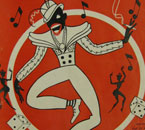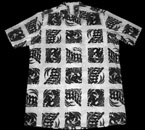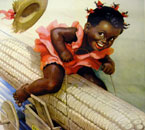While segregation was particularly ruthless in the Deep South, it was not limited to that part of the country. Across the nation, de facto segregation enforced a visual culture shaped by racial anxiety. Images of black belittlement—updated versions of the savage tribesman, the illiterate handyman, enfeebled children, and other character types of nineteenth-century southern fantasy—continued to feed a national hunger for negative depictions of black people.
This hunger was motivated by many things—from the yearning for an era when white power was absolute to the need to divert attention from the complex and painful dynamic of contemporary race relations by harking back to a period when racism was even more explicit and severe. If southern bigots conjured the past in order to valorize it, white moderates outside the South often did so in order to allay the feelings of guilt, confusion, or anxiety that the campaign for racial equality, and its call for the sharing of power and resources, were eliciting in the present.
Image Credits/Captions (Click on thumbnails for full image)
Hot Mikado, 1939. Lithograph on paper. 11 7/8 x 8 7/8 in. 2008.003. Collection of Civil Rights Archive/CADVC-UMBC, Baltimore, MD. 2008.003.
Shirt, early 1960s. Cotton. Collection Civil Rights Archive, CADVC-UMBC, gift of Steve Miller.
Charles E. Chambers (artist), “Grow White Corn For Extra Profits,” c. late-1930s. Offset lithography on Paper. 32 x 21 11/16 in. Published by the American Corn Miller’s Federation, Chicago. Collection of Civil Rights Archive/CADVC-UMBC, 2005.202. This poster for the American Corn Millers’ Federation informed farmers about the new-found popularity of products made from white corn—such as tortillas, taco shells, hominy, and grits—instead of the usual yellow variety. The ear of corn dwarfs the wide-eyed child, her legs suggestively straddling its huge phallic form. The image defiles its African-American subject in order to emphasize the whiteness of the corn and the economic value of a white, over colored, product.


